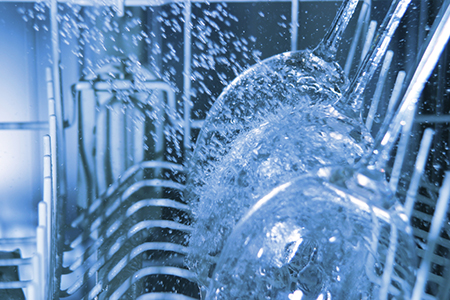 (TNS)–How many of you rinse off dishes first before putting them in the dishwasher?
(TNS)–How many of you rinse off dishes first before putting them in the dishwasher?
Since, to get out of cooking, I take care of cleaning up and that involves loading the dishwasher, I am a rinser.
When I don’t do it, any stray fleck of cheese is melted on the surface of the plates, requiring additional surface blasting to get the dishes clean.
If you listen to the Home Appliance Manufacturers Association, the latest Department of Energy regulations to reduce dishwashers’ water and energy consumption will have you washing dishes by hand to get them clean. That would have my water company rubbing its hands gleefully.
The proposed standards, which will become effective in January 2019, would require dishwashers to cut energy use 24 percent and water use 38 percent, leaving 3.1 gallons of water to clean an entire load of dishes in a normal wash cycle.
I’ve read through some of the Energy Department data. If paper plates and plastic forks weren’t environmentally questionable, as well, I’d invest in the companies that make them.
As I interpret the energy-conservation standards table on the Energy Department website, standard dishwashers manufactured after 2010 are limited to 6.5 gallons of water per cycle, and those after 2013 to 5 gallons per cycle.
It appears that 3.1 gallons per cycle is on the horizon unless the manufacturers get their way and the Energy Department modifies the new rules.
From what the manufacturers are saying, the new dishwasher standards may be about as water-saving as the early low-flow toilets — flushing twice or three times to clear them probably used more water than the 3.5-gallon models they replaced.
Newer toilets — we replaced the misfiring one in the master bath two years ago — seem to have no problems, thus far.
I have no opinion on the dishwasher issue. If you do, you might contact the Energy Department through its website.
One thing, however: It would be nice if they used language consumers could understand.
©2015 Philadelphia Inquirer
Distributed by Tribune Content Agency, LLC.



